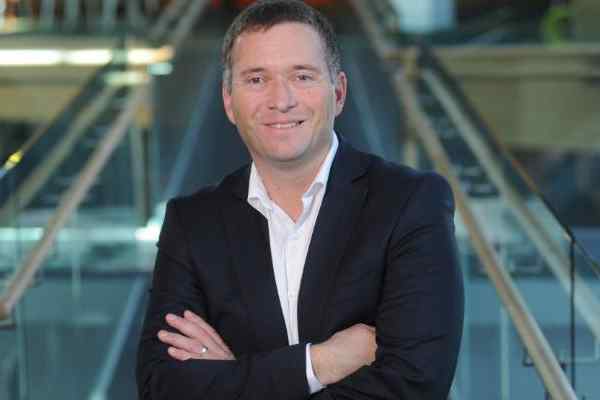Published on the 12/04/2019 | Written by Heather Wright

From customer-driven business to IoT as a design language…
Foodstuffs CEO Chris Quin has a vision for how we’re going to be shopping for groceries in the future.
Rather than making a shopping list, we’ll start with a menu of meals for the week, with a shopping list then generated automatically, either for delivery, click-and-collect or for you to go and do your shopping yourself.
Doing your own shopping? It is still Kiwis’ strong preference, so the list comes sorted by aisle to make your shopping an efficient experience. If you can’t spot something in the aisle, you push the help button and a unit flashes to draw your attention to the product. Your selections are placed into a smart trolley, which can tell if you’ve put something in that you haven’t scanned. Then just walk out through the contactless checkout. The receipt is delivered to your phone. “And you get a post-shop note saying on a calories basis you’re heading downhill, pick up your game,” Quin jokes.
“You’ve got to be brave enough to respond to what the facts are telling you, not what you would like them to tell you.”
“That’s all possible with the components we have today, it just has to be put together and turned in to a robust system,” he adds.
Speaking at GS1’s Connect 2019 eCommerce Innovation Summit in Auckland this week, Quin said Foodstuffs’ goal is ‘to become the most customer-driven retailer in the world’, and it’s harnessing data to do that.
With Foodstuffs only just getting going with e-commerce services, Quin acknowledges the co-op, with its inherent management challenges, is late to the party, but a relentless focus on the customer means it will quickly catch up.
“A customer-driven business simply defined is an organisation that uses customer insight and data to drive all and every operation, every strategy and designs every process around that fact base and the end to end customer experience on data and insight,” he says.
That requires solid data which can be turned into meaningful insight. “And you’ve got to be brave enough to respond to what the facts are telling you, not what you would like them to tell you,” Quin says.
“We’re not running a retail store, we’re an integrator of products for customers and we have to keep challenging ourselves about what is the best way to do it. When you’re an integrator the only strategy you can have is to be customer driven.”
Quin’s comments about being a customer driven integrator echoed a call from Sanjay Sarma, Professor of Mechanical Engineering at Massachusetts Institute of Technology (MIT), who urged New Zealand businesses to “invert” from selling products to selling experiences, and to view IoT as a design language, rather than a technology or system to be installed.
He told attendees customers don’t want to buy a quarter-inch drill bit – they want to buy a quarter-inch hole.
“What people want is the job to be done, not necessarily the product you want to sell them.”
He cited the likes of Uber, removing the need – not for taxis – but for owning your own car. In San Francisco pre-Uber, the taxi business had revenues of about US$200 million. After Uber they fell to $120 million. But Uber sales were $500 million – so total sales went to $620 million.
“So who did that hurt? It hurt the car companies, the insurance companies, the parking operators… People don’t want insurance, people want assurance. They don’t want a car, they want transportation. People don’t want parking, they want convenience, and not a parking ticket,” Sarma says.
He urged businesses to use IoT as ‘the new design language’.
“Every design language has words and nouns, and so does IoT.
“When people think of it they think of connectivity, which is one important thing. But it’s a trap we fall into,” he says, citing the example of Nespresso which created an internet connected coffee machine, which simply allowed users to activate the machine via their mobile. It proved to be a fail for the company.
“The fact is the internet of things is about a lot more than connectivity. It’s computation, it’s intelligence. The coffee machine could figure out what time I wake up and preheat the coffee.
“It’s another thing I call recruitment – the coffee machine needs to recruit an ecosystem. It could look at my heart rate and say I don’t need any more coffee today…
“And it’s about immersion. I park my car in the garage and walk into the house and the same music is playing, things just happen magically. The coffee machine heats up when I show up, the car seats heat up when it’s cold…”



























